Related Research Articles
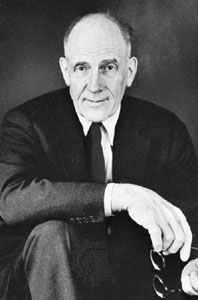
Wallace Kirkman Harrison was an American architect. Harrison started his professional career with the firm of Corbett, Harrison & MacMurray, participating in the construction of Rockefeller Center. He is best known for executing large public projects in New York City and upstate, many of them a result of his long and fruitful personal relationship with Nelson Rockefeller, for whom he served as an adviser.

Philip Cortelyou Johnson was an American architect best known for his works of modern and postmodern architecture. Among his best-known designs are his modernist Glass House in New Canaan, Connecticut; the postmodern 550 Madison Avenue in New York City, designed for AT&T; 190 South La Salle Street in Chicago; the Sculpture Garden of the Museum of Modern Art; and the Pre-Columbian Pavilion at Dumbarton Oaks. In his obituary, The New York Times wrote in January 2005 that his works "were widely considered among the architectural masterpieces of the 20th century."
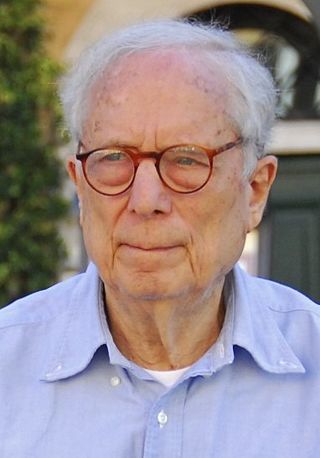
Robert Charles Venturi Jr. was an American architect, founding principal of the firm Venturi, Scott Brown and Associates, and one of the major architectural figures of the 20th century.
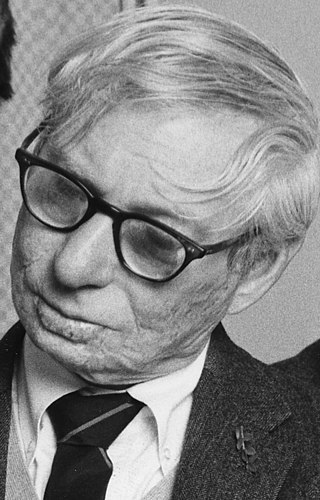
Louis Isadore Kahn was an Estonian-born American architect based in Philadelphia. After working in various capacities for several firms in Philadelphia, he founded his own atelier in 1935. While continuing his private practice, he served as a design critic and professor of architecture at Yale School of Architecture from 1947 to 1957. From 1957 until his death, he was a professor of architecture at the School of Design at the University of Pennsylvania.
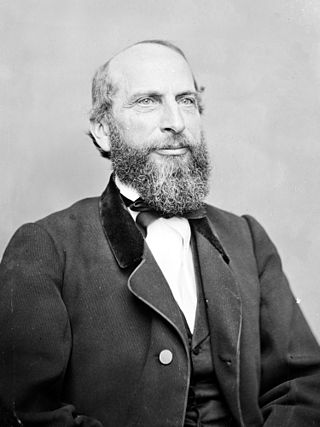
James Speed was an American lawyer, politician, and professor who was in 1864 appointed by Abraham Lincoln to be the United States Attorney General. Speed previously served in the Kentucky legislature and in local political offices.
Adolph Alexander Weinman was a German-born American sculptor and architectural sculptor.
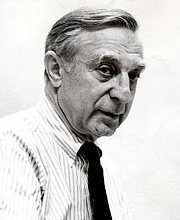
Max Abramovitz was an American architect. He was best known for his work with the New York City firm Harrison & Abramovitz.
Romaldo "Aldo" Giurgola AO was an Italian academic, architect, professor, and author. Giurgola was born in Rome, Italy in 1920. After service in the Italian armed forces during World War II, he was educated at the Sapienza University of Rome. He studied architecture at the University of Rome, completing the equivalent of a B.Arch. with honors in 1949. That same year, he moved to the United States and received a master's degree in architecture from Columbia University. In 1954, Giurgola accepted a position as an assistant professor of architecture at the University of Pennsylvania. Shortly thereafter, Giurgola formed Mitchell/Giurgola Architects in Philadelphia with Ehrman B. Mitchell in 1958. In 1966, Giurgola became chair of the Columbia University School of Architecture and Planning in New York City, where he opened a second office of the firm. In 1980 under Giurgola's direction, the firm won an international competition to design a new Australian parliament building. Giurgola moved to Canberra, Australia to oversee the project. In 1989, after its completion and official opening in 1988, the Parliament House was recognized with the top award for public architecture in Australia.
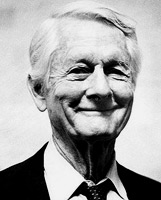
Edmund Norwood Bacon was an American urban planner, architect, educator, and author. During his tenure as the executive director of the Philadelphia City Planning Commission from 1949 to 1970, his visions shaped today's Philadelphia, the city of his birth, to the extent that he is sometimes described as "The Father of Modern Philadelphia". He authored the seminal urban planning book Design of Cities.
Gideon Shryock was Kentucky's first professional architect in the Greek Revival Style. His name has frequently been misspelled as Gideon Shyrock.
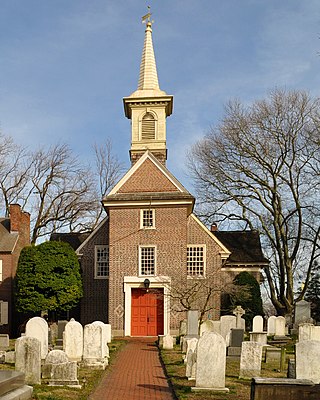
The architecture of Philadelphia is a mix of historic and modern styles that reflect the city's history. The first European settlements appeared within the present day borders of Philadelphia, Pennsylvania in the 17th century with most structures being built from logs. By the 18th century, brick structures had become common. Georgian and later Federal style buildings dominated much of the cityscape. In the first half of the 19th century, Greek revival appeared and flourished with architects such as William Strickland, John Haviland, and Thomas U. Walter. In the second half of the 19th century, Victorian architecture became popular with the city's most notable Victorian architect being Frank Furness.
Louis Edward Sauer is a North American architect and design theorist of dual American and Canadian nationality, known for his role in the renewal in Society Hill, Philadelphia and his contributions to low-rise, high-density housing. Sauer worked with housing developers to produce low-rise high-density housing projects throughout the 1960s and 70s.
Zantzinger, Borie and Medary was an American architecture firm that operated from 1905 to 1950 in Philadelphia. It specialized in institutional and civic projects. For most of its existence, the partners were Clarence C. Zantzinger, Charles Louis Borie Jr., and Milton Bennett Medary, all Philadelphians.
Oscar Gregory Stonorov was a modernist architect and architectural writer, historian and archivist who emigrated to the United States from Germany in 1929. His first name is often spelled "Oskar".

The Richards Medical Research Laboratories, located on the campus of the University of Pennsylvania in Philadelphia, were designed by architect Louis Kahn and are considered to have been a breakthrough in his career. The building is configured as a group of laboratory towers with a central service tower. Brick shafts on the periphery hold stairwells and air ducts, producing an effect reminiscent of the ancient Italian towers that Kahn had painted several years earlier.
Harrison & Abramovitz was an American architectural firm based in New York and active from 1941 through 1976. The firm was a partnership of Wallace Harrison and Max Abramovitz.

Joseph & Joseph is an architectural firm founded in 1908 in Louisville, Kentucky. The main services include architectural, engineering and design projects.
Luckett & Farley is an architecture, engineering, and interior design firm based in Louisville, Kentucky. It was founded in 1853, making it the oldest continually operating architecture firm in the United States that is not a wholly owned subsidiary. The firm began under the name Rogers, Whitestone & Co., Architects, changing its name to Henry Whitestone in 1857, to D.X. Murphy & Brother in 1890, and to Luckett & Farley in 1962. The company is 100% employee-owned as of January 1, 2012 and concentrates on automotive, industrial, federal government, higher education, health and wellness, and corporate/commercial markets. There are more LEED professionals at Luckett & Farley than any other company in Kentucky with 50, as of December 2012.

Arthur Ingersoll Meigs (1882–1956) was an American architect.
Charles H. Traub is an American photographer and educator, known for his ironic real world witness color photography. He was chair of the photography department at Columbia College Chicago, where he established its Museum of Contemporary Photography (MOCP) in 1976, and became a director of New York's Light Gallery in 1977. Traub founded the MFA program in Photography, Video, and Related Media at the School of Visual Arts in New York City in 1987, which was the first program of its kind to fully embrace digital photographic practice. He has been Chairperson of the program since. Traub has published many books of his photographs and writings on photography and media.
References
- ↑ Williamson, James (March 24, 2015). Kahn at Penn: Transformative Teacher of Architecture. Routledge. ISBN 9781317669227 – via Google Books.
- ↑ "A surprising sense of intimacy", article by Patricia Leigh Brown, The Philadelphia Inquirer, January 28, 1986
- ↑ "Searching for Philadelphia: The Concealed City (David S. Traub, AIA) – American Institute of Architects". www.aiaphiladelphia.org.
- ↑ "Statement of Support by Distinguished Architect, David S. Traub – Faithful Laurentians". December 16, 2016.
- ↑ "Weekly Press – Philadelphia News". philadelphiafreepress.com.
- ↑ "index". www.saveoursites.org.
- ↑ "Searching for Philadelphia: The Concealed City – Camino Books, Inc". www.caminobooks.com.
- ↑ "Discovering Philadelphia: Places Little Known – Camino Books, Inc". www.caminobooks.com.
- ↑ "Inside look into David Traub's Concealed Philadelphia", article by Nicole Contosta, Weekly Press, Philadelphia, February 19, 2014
- ↑ Traub, David S. (September 21, 2013). Searching for Philadelphia: The Concealed City. Camino Books, Inc. ISBN 978-1933822785.
- ↑ "About". Lincoln in Louisville.
- ↑ "The Courier-Journal from Louisville, Kentucky on May 31, 2015 · Page I3". May 31, 2015.
- ↑ "Lincoln in Louisville".
- ↑ "'Lincoln in Louisville' – LEO Weekly".
- ↑ "Performing arts picks for week of May 31". The Des Moines Register .
- ↑ New York (N.Y.).; Ruberoid Company. (July 11, 1963). Fifth Ruberoid architectural design competition: East River urban renewal project. Ruberoid Co. – via Hathi Trust.
- ↑ "Philadelphia Association of Community Development Corporations Records – Temple University Libraries". library.temple.edu.
- ↑ http://www.preservationalliance.com/wp-content/uploads/2014/09/Program_Book_2012.pdf [ bare URL PDF ]